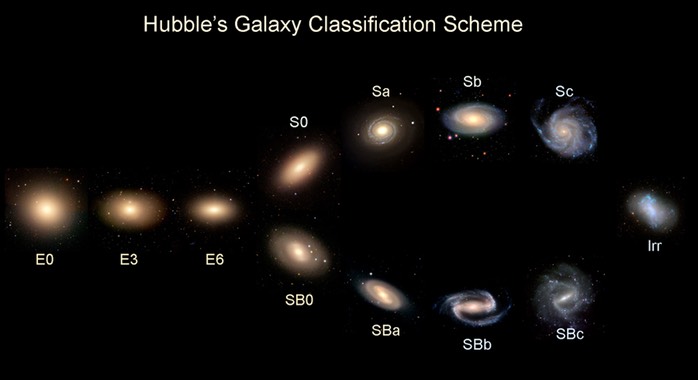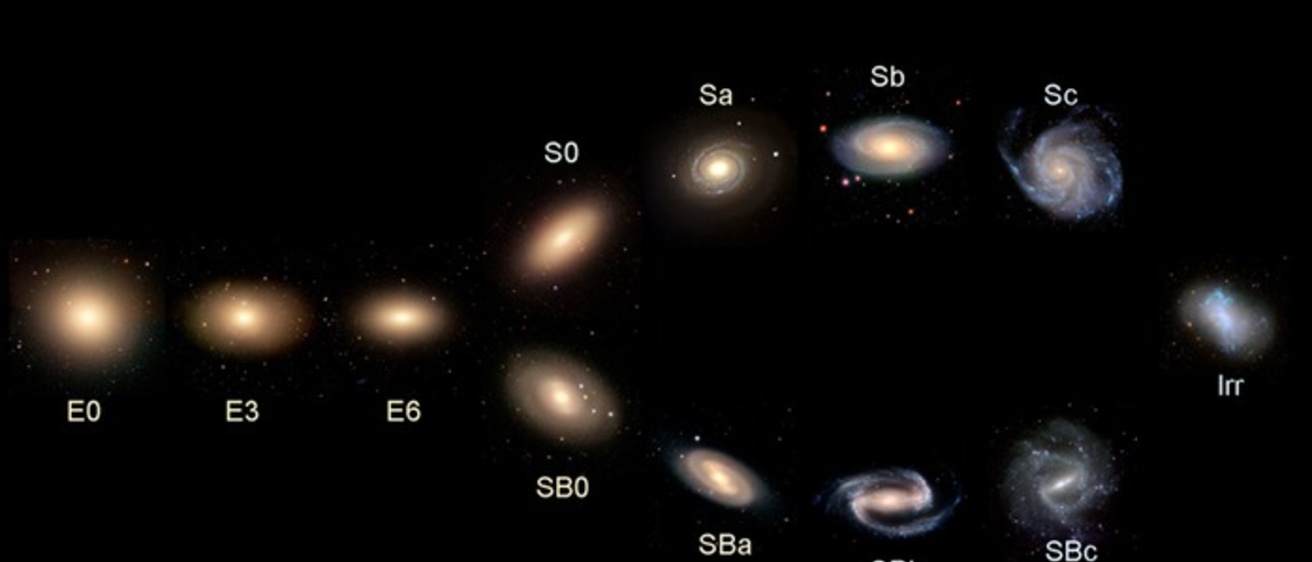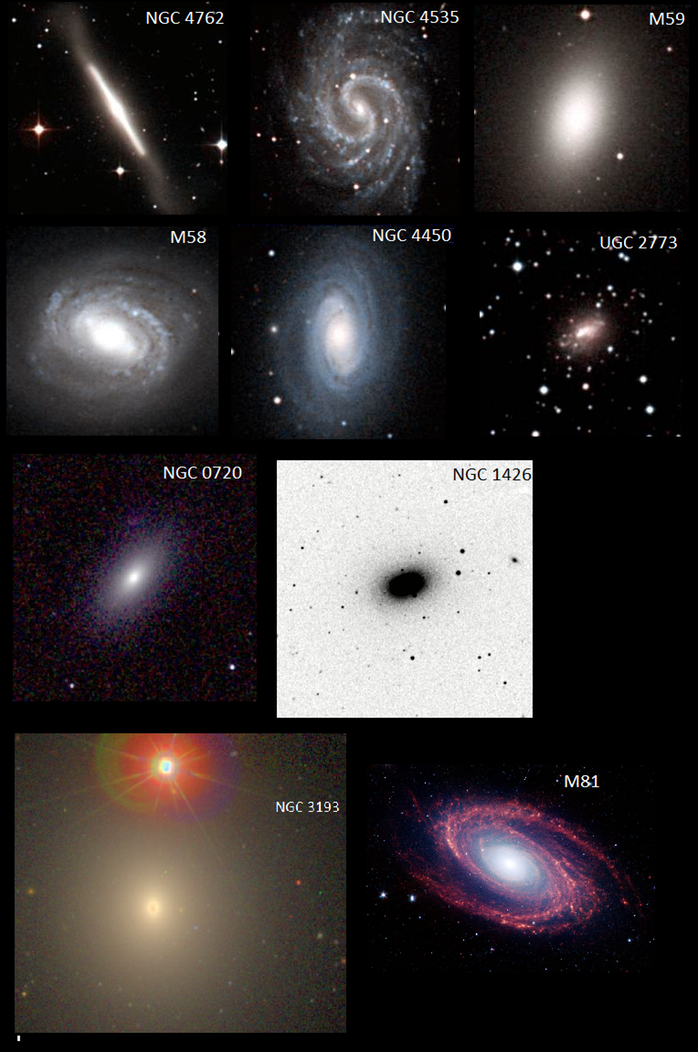
Background: First Look at Classifying Galaxies
The image above is called Hubble’s Tuning fork. It was developed by Edwin Hubble, who was the first person to classify galaxies based on their morphology. There are five types of galaxies in the tuning fork:
- Ellipticals (E)
- Lenticular (S0)
- Spirals (S)
- Barred Spirals (SB)
- Irregulars (Irr)
Within each type, there are subclassifications. For ellipticals, a number from 0 to 9 indicates the eccentricity of the elliptical. For example, an E0 is more spherical than an E1. An E9 elliptical has a high eccentricity, so it is very oval in appearance. Elliptical galaxies generally have older star populations, so they are redder in appearance.
The lenticular galaxies are disk like galaxies that have a central bulge but no spiral arms. These occupy the step between ellipticals and spirals in the tuning fork. In general, lenticular galaxies have older star populations like elliptical galaxies, and very little current star formation.
For both spiral and barred spirals, a letter sequence going from ‘a’ to ‘c’ indicates two visual properties: how tightly wound the spirals arms are and how large the central bulge is. So, a Sc has no bar, is very loosely wound, and has a small central bulge. A SBa has a bar, tightly wound arms, and a large central bulge.
Finally, the irregular galaxies are those that are neither spiral nor elliptical. Many of these kinds of galaxies are the result of collisions or interactions that have significantly mixed the stars, gas, and dust.

